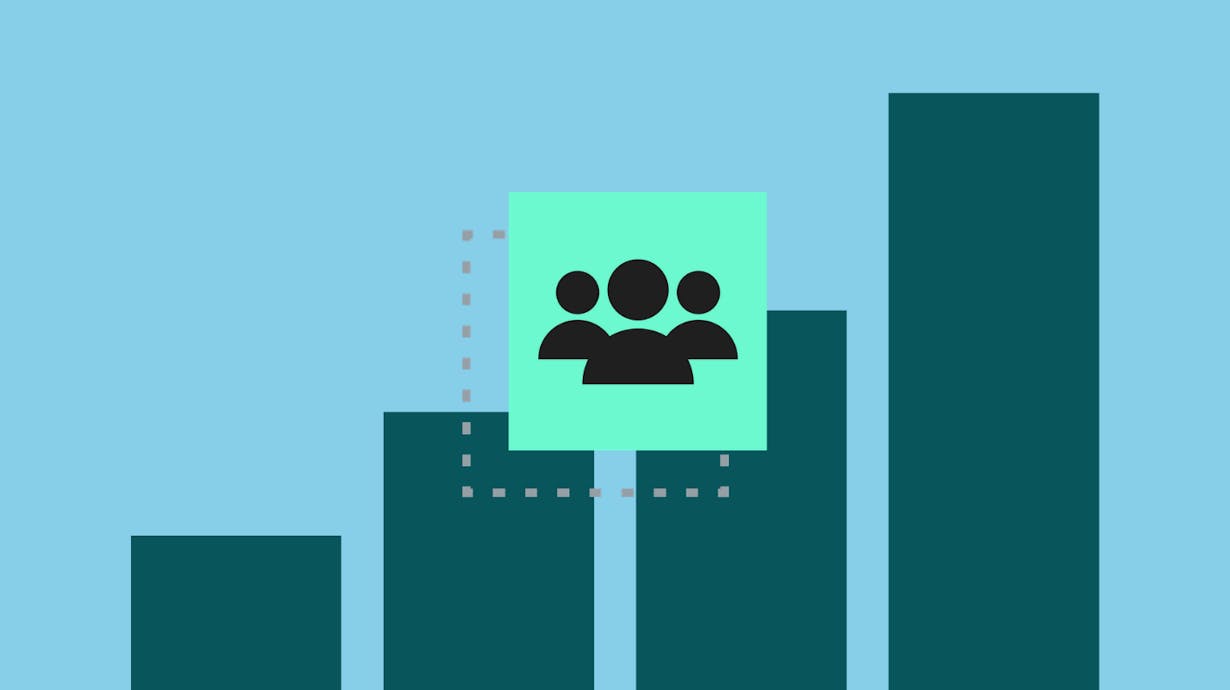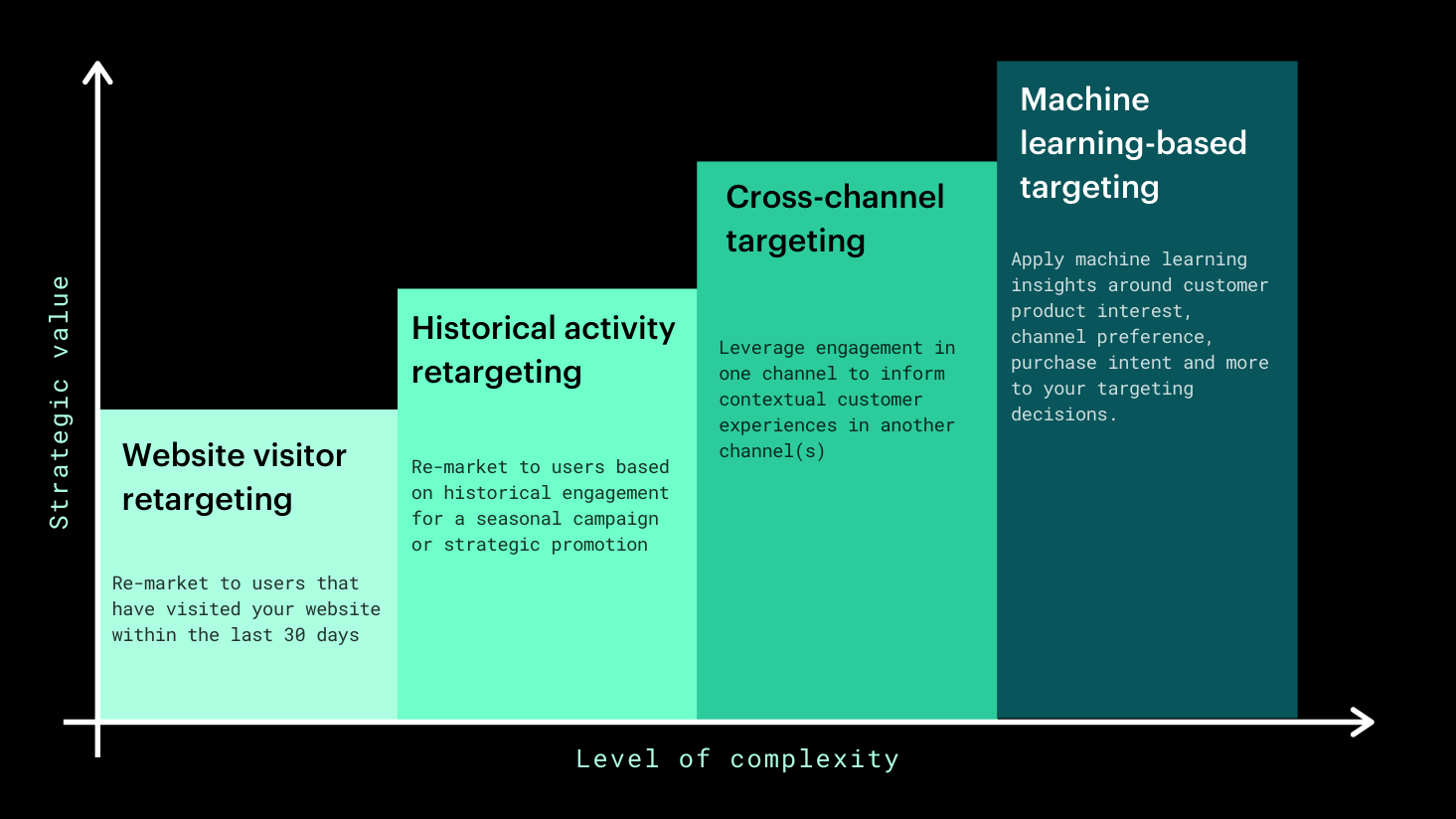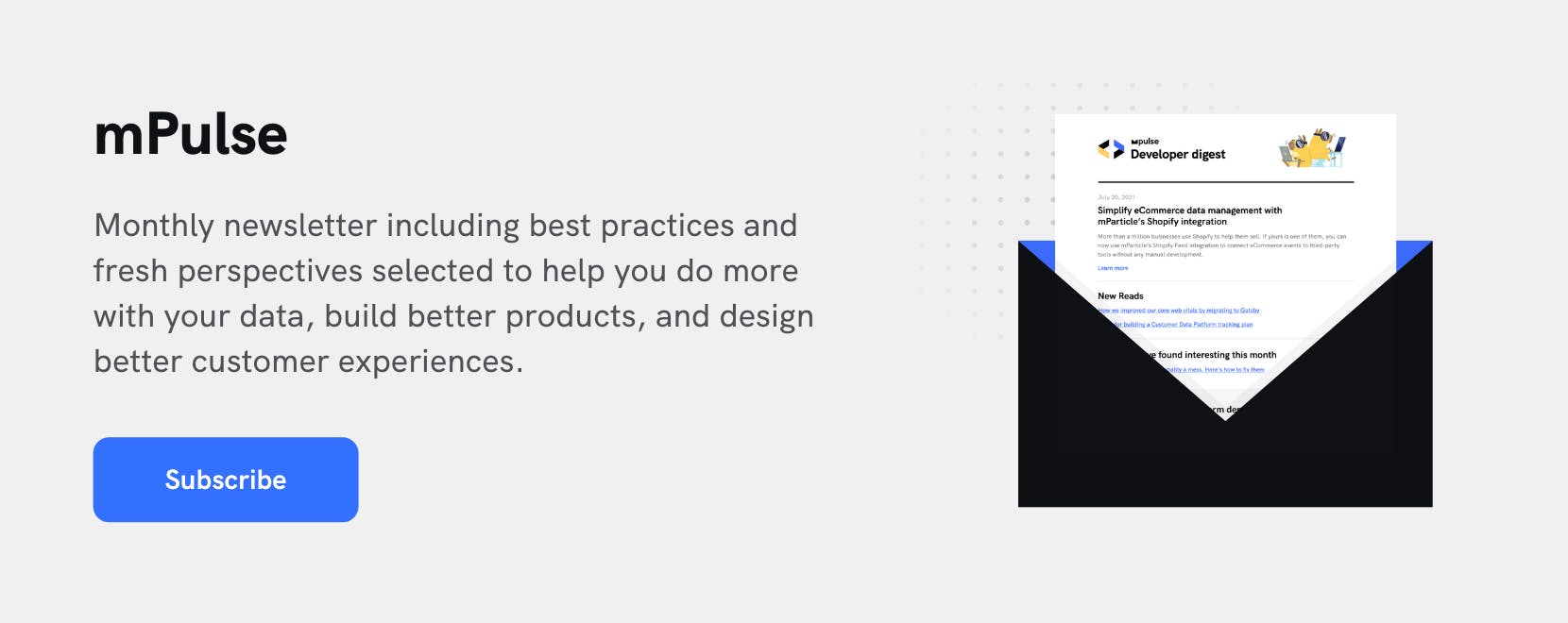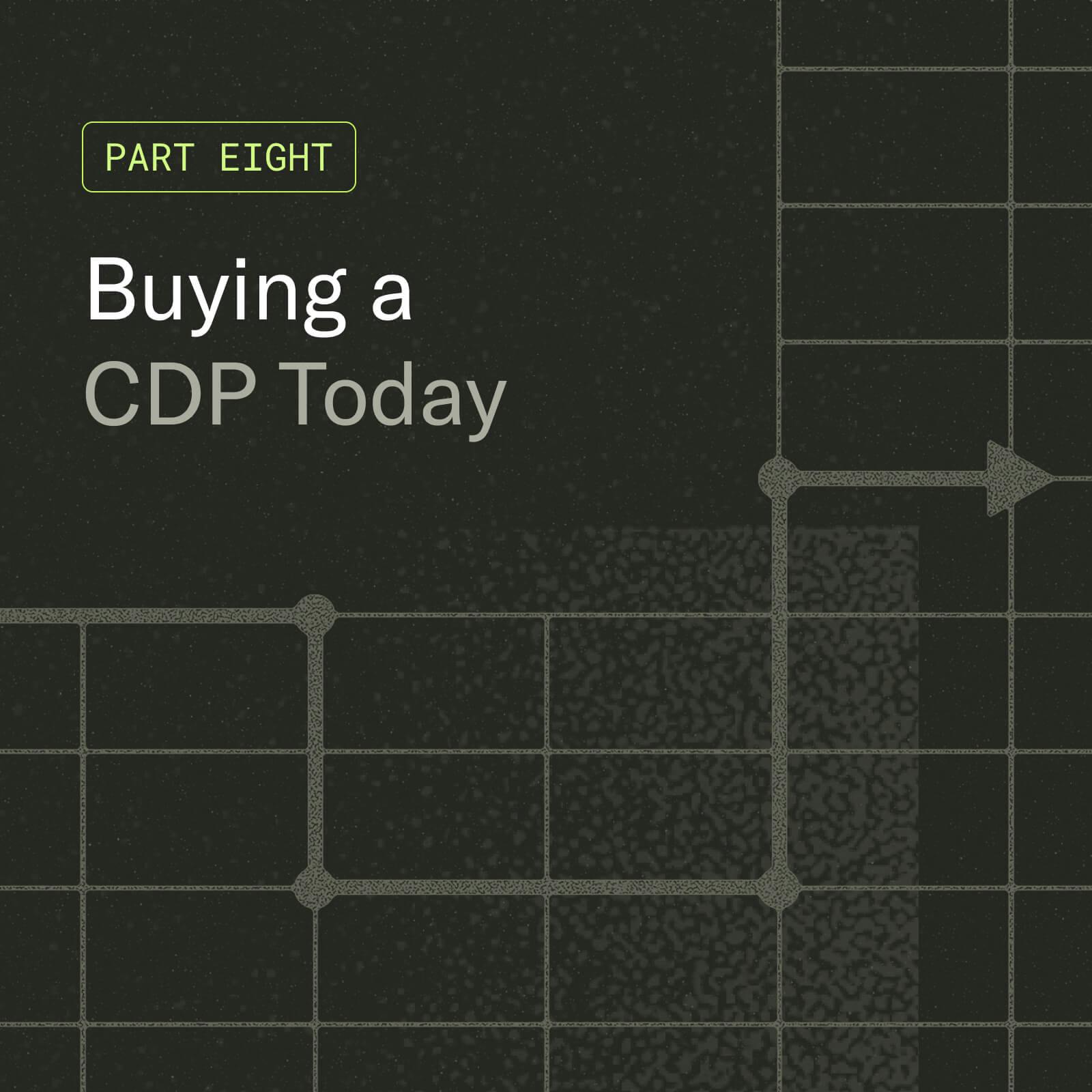Modernize your audience segmentation strategy
Audience segmentation is key to delivering contextual experiences at scale. Learn more about how you can modernize your audience segmentation strategy and deliver experiences at the pace of your customers.

Customers are engaging with your brand across more digital touchpoints than ever before, and chances are they’re also engaging more often.
For marketers and product managers, the increased amount of customer engagement data collected presents both an opportunity and a challenge. More granular customer data provides insights into customer interests and preferences, product performance, market trends, and more. Using it effectively, however, requires democratized access to that data, a system to ensure data quality (consistency, accuracy, validity), and an infrastructure that enables growth teams to activate that data.
One of the best ways to use your customer data effectively is through audience segmentation. Audience segmentation is the process of identifying cohorts within your customer base and designing tailored experiences based on cohorts memberships. Audience segmentation is not new–many brands have been building segments for years. But the fact is that many of the segmentation processes that brands have traditionally relied upon, such as .csv exports and manual list builds, are resource-intensive and cumbersome. To activate data and deliver experiences at the pace of the modern customer, you need a modern audience segmentation infrastructure.
How do you get started?
Audience segmentation requires the necessary tooling, data, and organizational culture. Once you have your infrastructure in place, however, the sky's the limit.
Real-time customer data collection
Robust audience segments are built on high-quality customer data. The first step to segmentation is making sure that you have the infrastructure in place to track user events across channels in real time. There are a number of solutions available that allow you to track events by implementing a code snippet. Google Analytics, for example, is a common tool for event tracking and analytics for websites. If customers are engaging with your brand across multiple digital touchpoints (iOS, Android, website, OTT platform, smart home, etc.), you may consider a Customer Data Platform (CDP) for event collection. CDPs collect data from across platforms (or ingest server-to-server) into a single customer database, allowing you to build audience segments based on cross-channel engagement in a single system.
When assembling your data infrastructure, there are a few components that are important to keep in mind.
1. Data quality: Event collection is worthless if your data is inaccurate or being implemented inconsistently across platforms. Make sure you have a system in place to monitor accurate event implementation and validate data point accuracy before it is used for downstream purposes.
2. Data access: Although events are often implemented by developers, marketers and product managers are the downstream consumers of customer engagement data. It’s important to make sure that business users have access to high quality customer data and can use it to make decisions.
3. Technical overhead: Beyond the initial work, event implementations can lead to ongoing maintenance tasks for developers (SDK updates, event modifications, etc.). The most efficient organizations find a way to collect the events they need while allowing developers to stay focused on customer-facing initiatives.
Cross-channel identity architecture
If you’re collecting events from across platforms (mobile, web, point-of-sale, server-side, OTT, etc.), your understanding of who is engaging can quickly become muddled. A single customer may browse a product on your website, click on a relevant Facebook ad, and open an email promoting that product, all before purchasing that product on your mobile app. Without the ability to tie those engagements to a unified customer profile, it’s possible that some of your systems will have no way of knowing that this purchase has occurred, and that your customer will continue to receive promotional messaging long after they’ve converted. Such inefficiencies not only waste money, but significantly degrade the user experience. To deploy audience segmentation effectively, it’s critical to have an identity architecture in place that allows you to unify customer engagement data from across systems to holistic customer profiles, unique for each customer. It’s also important that as new data is collected, your profiles are updated in as close to real time as possible.
Real-time audience infrastructure
The more dynamic your audience segments are, the more valuable they become. When segments are updated only periodically, either through bulk processing or manual .csv upload, you increase your risk of delivering out-of-date experiences to your customers. For example, if the target audience of your email campaign is only updated once a day, you may be continuing to send promotional emails to customers that have converted within the 24-hour period since the last refresh. Furthermore, if a customer opts-out of marketing communication in accordance with the GDPR or CCPA, you're risking your organization’s regulatory standing if you're unable to update audience memberships in real time. Constructing your audience infrastructure with tools that offer API-based audience updates allows you to deliver personalized experiences with greater efficiency. The ability to keep your audience segments up-to-date in real time also opens up a number of more advanced use cases, such as 1:1 transactional messaging, cross-channel campaigns, and ML-based targeting.
What does modern audience segmentation look like?
For consumer-facing brands, audience segmentation has become a ubiquitous step in the process of delivering personalized customer experiences. That said, different organizations are able to accomplish different segmentation use cases depending on their maturity level. Factors such as access to data across teams, data quality management systems, and data processing speed separate leading brands from the rest of the market. No matter where your organization is today, however, you can always get started with audience segmentation.

Audience segmentation maturity curve
Website visitor retargeting
If you’re early in segmentation maturity, recent website visitor retargeting is an excellent use case to get started with. Begin by tracking website visits on your site. This can be done by implementing an analytics tracking tool, such as Google Analytics, or by implementing a CDP to manage your event tracking. If you’re currently working with a social media platform for advertising, such as Facebook, you can also implement the appropriate pixel on your website so that you can sync website activity to your social media tool. Once you’re collecting website visit events, you can use them as conditions to build your audience segment. To target highly active users, you can set the audience definitions to “include all users that have visited the website >5 times within the last 30 days.” To broaden the scope of your segment, you can set the definitions to “include all users that have visited the website >0 times in the last 30 days.”
You can build this audience within a social media system, such as Facebook, or within your messaging tool if it has segmentation capabilities available. If you’re using a Customer Data Platform as the foundation of your data infrastructure, that is a great place to build your audience because you’ll be able to pull in data collected from multiple sources and connect that single audience to multiple destinations.
Historical activity retargeting
Once you’re comfortable retargeting recent website visitors, a great next step is to retarget based on historical data. Historical retargeting is effective for running seasonal campaigns, such as a Black Friday campaign; or delivering exclusive messaging, such as a premium offer to long-time customers. Additionally, historical segments can be applied to analytics experiments and reveal growth of your target audience over a certain time period. You can build your historical audience segment by running a query in a BI tool, such as Looker, or in your Customer Data Platform. For example, mParticle’s Standard Audiences allow you to build granular audiences based on as much data as you have stored.
Cross-channel targeting
As customers engage across more channels and devices, it’s important to make sure that your messaging is in-sync across platforms. Cross-channel campaigns leverage data and insights gained in one channel to inform customer experiences in other channels. For example, if a customer favorites a certain product in your mobile app, you can build a cross-channel campaign to deliver that customer contextual offers on Facebook and/or through email.
To build a cross-channel campaign, it’s important to ensure that you’re collecting data from across sources into a single system, and that all customer activity is tied to a unique customer profile. Customer Data Platforms are particularly valuable when building cross-channel campaigns, as they automate data collection from across channels, ensure that that data is consistent according to your data schema, and make it easy for business users to access that data and use it to build audiences without developer support.
For an example, you can read about how GOAT used mParticle to build their cross-channel audience segmentation strategy here.
Machine learning-based targeting
Once you’ve advanced in both audience segmentation and data infrastructure capabilities, machine learning-based audience segmentation is an excellent way to deliver highly-relevant experiences to your customers at scale. Begin by setting up algorithms to analyze customer engagement data and understand characteristics such as product interest, channel preference, and purchase intent. Next, make sure that you’re storing those ML-based insights as attributes on your customer records. Finally, you can build an audience segment using those attributes as inclusion criteria. If you’re building your audience within a Customer Data Platform, you can then connect it to any downstream systems that are relevant to your initiative.
For a more detailed example, you can read about how Overstock used mParticle to leverage ML-based insights for more contextual email offers here.
No matter how advanced your segmentation use case, your audiences will only be as good as the system you’re using to build them. It’s critical to ensure that you’re able to build audiences based on holistic, high-quality customer profiles, that you have the ability to A/B test your segments, and that you’re not beholden to engineering or data science for querying and list management. To learn more about how a Customer Data Platform can help you build more complete audiences, faster, you can try out mParticle’s Audience builder for free in our platform demo here.




